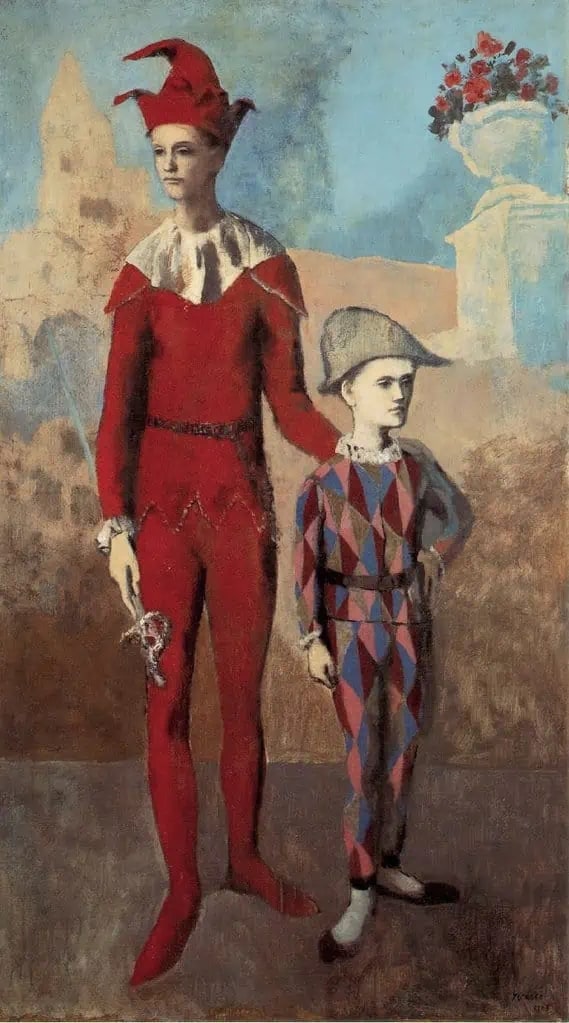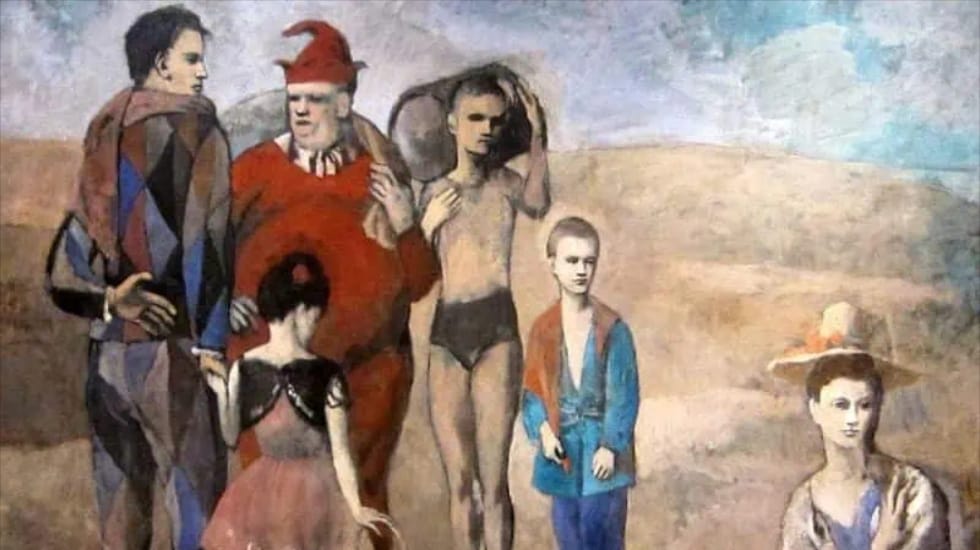Picasso meets Fernande Olivier, a French artist and model who becomes his inspiration and teacher in 1904. Fernande is credited as being at least partially responsible for Picasso's transition from his blue period, with its cold and gloomy tones, to his rose period, which is warmer and full of light.
He changed his color palette in 1904, transitioning from blues and dark characters to reds, roses, and oranges. This period will come to be known as Picasso's Rose Period. During his rose period, he will choose brighter, lighter, and more warm colors, a subtle use of lines drawing, idealized shapes, and dynamic characters, such as circus performers.
Picasso becomes fascinated by circus people and begins to include saltimbanques and harlequins into his works. Picasso observes the saltimbanques at the Medrano Circus as well as in the streets and neighborhoods of Paris's outskirts, where a migrant community of acrobats, musicians, and clowns entertain the passers-by.
During Picasso rose period artworks went from cold to warm
Picasso had a penchant for depicting artists in repose, often alone or with colleagues, in his rose period toiles, gouaches, drawings, and impressions. Despite the warm color palette, the viewer detects a hint of sympathy and nostalgia in the characters' vacant stares. Due to their relative poverty and the traditional role of the saltimbanque as a symbol of the overlooked artist, an all-powerful language dominates Picasso's rose period images.
The rose season will also see a lot of work on the topics of dissatisfaction, isolation, and putting oneself out there. Famille de Saltimbanques, one of Picasso's most famous rose period toiles, depicts a troop of itinerant circus performers in a desolate landscape. At the time, people in the circus and artists were frequently seen as soul mates - both were regarded as independent, courageous individuals idolized by a slew of countercultures but popularized by the masses. Picasso hoped to eliminate these pariahs by making them the subjects of his beautiful, but obnoxious, rose-period works, notwithstanding the criticism he received.
Although Picasso's period rose work focuses on painted canvases, he also creates stunning stamps on the same theme. These wonderful stamps are frequently created based on tableaux from the same period, such as "The Saltimbanques" and "Madame Ricardo Canals." The main characteristic of the rose period is a transition from figurative work to a more expressive and abstract use of lines and colors, which marks the beginning of Picasso's fame and success. As a result, these exquisite prints, created in the style of Picasso's rose period, are among the most enticing and sought after by Picasso collectors on the market today.

During Picasso rose period artworks went from cold to warm

